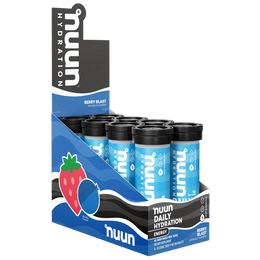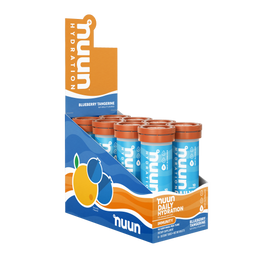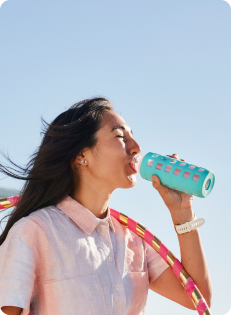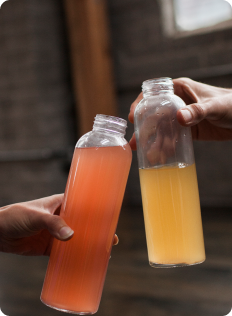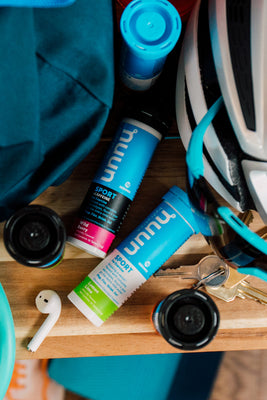Libby Caldwell Embraces the Altitude
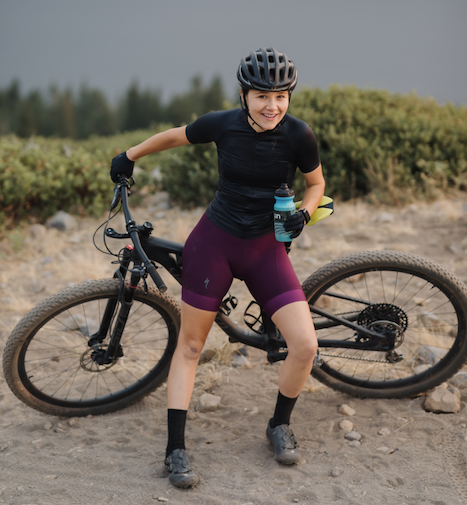
Photos in this blog post are by Aubrey McCready, @aaroper on Instagram.
It started as an altitude camp, a way to keep the motivation flowing at a time when racing was incredibly unsure. New landscapes always bring a fresh perspective and altitude brings a new brutal reality of hurt you can't quite achieve at sea level. Shifting north to the sierras also offered an opportunity to get out of my suburban apartment that had been overrun in the weeks following shelter in place by large crowds from the greater bay area seeking Marin's proximity to nature.
But as weeks passed, the rented room in a friend's house in Tahoe started to feel more like home than my small apartment in the bay area.
"It sometimes takes a huge shift in one’s life to force change."
It is hard to argue that the COVID-19 pandemic has not altered every single human's life in the past 6 months. My day job, at first, was gone. As it became apparent shelter in place was here to stay, my office job became remote and ideas of getting out of the bay area began to swell.
I feel incredibly lucky my favorite hobby/pastime/passion is the perfect vehicle for social distancing. When life as we knew it first shut down, riding outside was a little sliver of normalcy in time when everything was anything but normal.
After college I moved back to my hometown where I've lived the last 4 years. The last couple months at home I felt pretty stuck. Especially with no race travel, or travel in general, life was feeling painfully stagnant. The pandemic gave me the push I needed, as well as flexibility in work to make the big move to the mountains.
On the surface I know the Tahoe area well.
I've spent many a family vacation frolicking in the various lakes, riding up many of the lengthy passes, and hiking some of the vast trail networks. Every time I crest Donner Pass on Highway 80 and the mountain landscape becomes starkly visible it’s difficult to contain a smile. But spending a week or two up in the mountains is significantly different than coming up to train for a month…
I have never been the one to do a proper altitude camp although I’ve raced many times at altitude. Unfortunately, I never had the time and job flexibility to dedicate such a long span of time to training. And so, my history of racing at altitude has had varying levels of mediocrity.
I recall ignorantly racing my first mountain bike nationals in Granby Colorado which sits at nearly 8000 feet. I had come straight from Mexico and driven through the night to make my 8am race start. What a day that was. Spoiler: it didn't go particularly well.
I have employed the "if you don't focus on the altitude, you probably won't notice it" tactic. As recently as last season's Truckee Fondo or Grinduro -luckily albeit far more relaxed events - I came up to altitude the day before the event and blindly sent it.
I remember my drive up to Tahoe, I was stuck in standstill traffic driving through Roseville and then again over Donner Pass. I restricted my water intake to only hit one rest stop. AMATURE MISTAKE. Pulling into Truckee I had a pretty aggressive headache due to dehydration. It only took about 10 Nuun tablets to alleviate the issue... but this proved a prime example of how altitude can sneak up on you in unexpected ways.
Given the dry air it becomes far easier to find yourself dehydrated. Even if you're not exercising or even outside.
Everything is tougher at altitude. You take a look around and the landscape says it all. Trees protrude out of the side of impossibly steep and rocky terrain. Marmots hide from the unrelenting sun under boulders. Jays and Robins hide amongst the rough shrubs from the watchful gaze of larger winged predators. And that's just the summer! The winter is equally as daunting but on the frigid side of the spectrum. All inhabitants have adapted to life in the harsh elements.
And so enters the challenge of altitude training...
One must spend 2-3 weeks living at high elevation in order for the body to adapt. You can get away with 1-2 days of living at altitude before your body starts to truly fatigue in the harsh elements. Your body does not recover as quickly or thoroughly at higher elevation and so after a couple days the fatigue you have built up tends to stick around a lot longer than if you were at sea level.
The Tahoe area ranges from ~5,800 feet in town to over 10,000 feet on some of the higher peaks. Why is living at greater elevation difficult? Atmospheric and inspired oxygen pressure fall linearly as altitude increases. With lower inspired oxygen pressure comes lower pressure for gas exchange in the lungs. You obtain less oxygen per breath of air. Initially there is an increase in cardiac output to do the same physical work one would do at sea level. With acclimatization this settles to sea level values. At all times there is increased heart rate and decreased stroke volume for a given level of work, although max heart rate is rarely ever reached.
All that to say, when training your heart rate ends up sitting higher than you want it to. It won’t go down, but it also won’t go up to the highest throws of your aerobic capacity, and you'll be seeing red before your legs ever start to burn. I have found it difficult to get my legs to fatigue at altitude. My limiting factor is almost always my aerobic system. Eventually your body will slowly adapt to the lower gas exchange pressure and increase the red blood cell count in your bloodstream to allow more oxygen per liter of blood pumped. This is what you are trying to gain when you train at altitude.
The mountain environment is just more demanding…
You wake up dehydrated. Unless you sleep-hydrate you haven't had fluids for the length of your sleep. I always wake up feeling a little stale and dried out. In Tahoe I wake up feeling like a raisin that has been left out on a rock to catch fire.
If you want to perform well at altitude you must be proactive about your nutrition strategy. I do a lot more pre and post workout hydrating to make sure my body can operate and recover at a high level.
I call it the pregame. Pregaming whatever activity I have in store that day. Lately I’ve been doing a lot more low intensity volume work since it’s a perfect way to explore more of my new home. My breakfast is always something high in carbs to fuel my work with a little protein to keep me full through the first hour of exercise. I am a huge proponent and believer in waffle watts. So, I usually have a large Belgian waffle with some Greek yogurt and maple syrup on top. but the most vital part of my morning routine is rehydrating from 7-8 hours of slumber. And to rehydrate from sleep I use Nuun Prime. And if it’s a particularly long or hard day ahead I go for the Nuun Prime +Caffeine. Before Prime came out, I'd hyper hydrate in the mornings with 2 tablets of Nuun Sport but it’s been incredibly helpful to have a product that not only has the electrolytes I need but also some BCAA to aid in the sustainability of my workouts.
Even after a month of adapting to these new challenges, you can say goodbye to about 10% of your power. That number may slowly decrease over years, but for the most part you cannot put out the same power at altitude as at sea level. It’s a mental adjustment as well. As someone who uses power and heart rate on all rides, training or otherwise it’s difficult to see your numbers deteriorate when you've been working just as hard at altitude, if not harder! I mean, faster is more fun... so it is a hard pill to swallow when you are suffering more in the thin, dry air but also going significantly slower.
However, once you return to lower elevations it's like a light switch. Your recovery is faster, your legs are faster, your lungs finally feel whole again. you essentially feel like a superhero. The physical and mental breakdowns elevation provokes, while painful, are definitely worth it when you can fly away from your friends back home.
"Although I do like to go fast, living in the mountains has been a nice reminder that slower is not always bad."
The Bay Area is fast paced. Everyone is racing to get somewhere, they’re all trying to do 4 things at one time, and wants to go 500 watts at all times.
Especially this year, it's nice to embrace a slower mountain life when the whole world around us is so incredibly hectic. You can take on each challenge, whether it be social, political, mental, physical at one time—not all at once. Being in the mountains it finally feels like I can get in a breath of fresh air (even if it's shallow and short). In these times, I'll take what I can get.




















